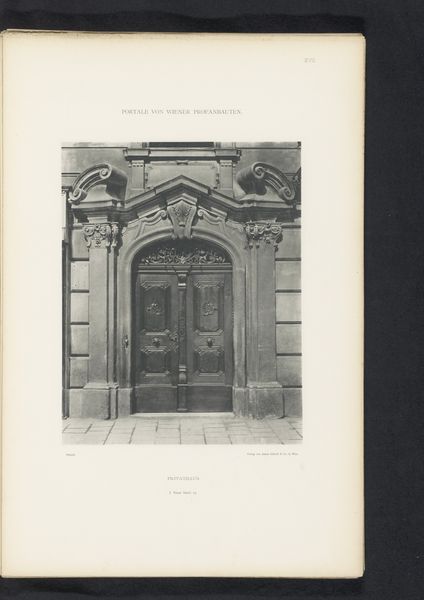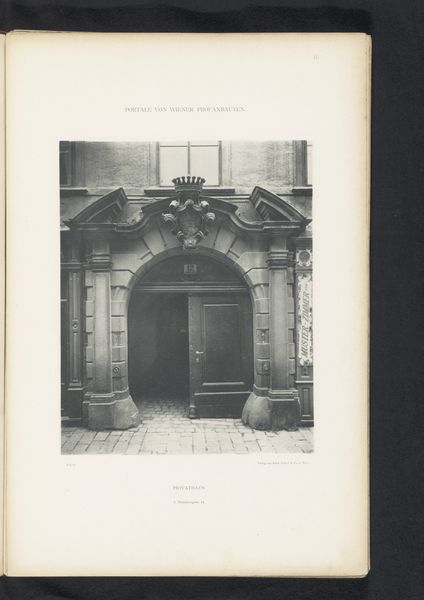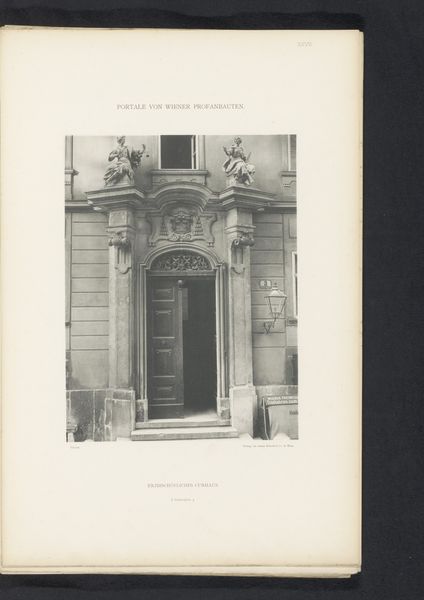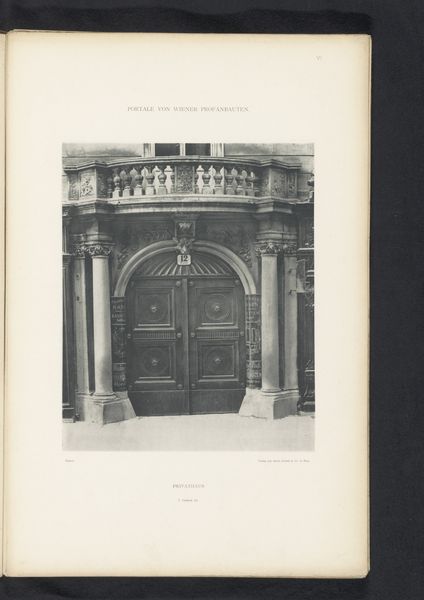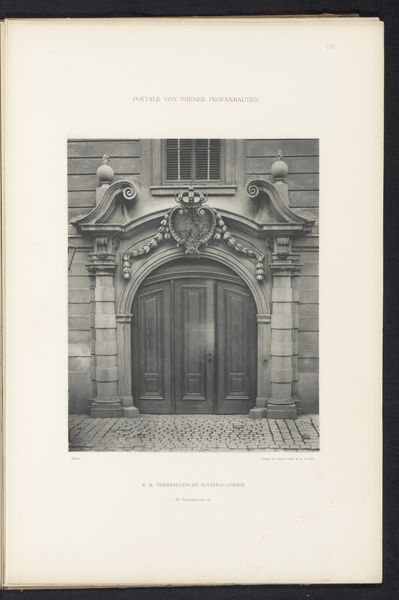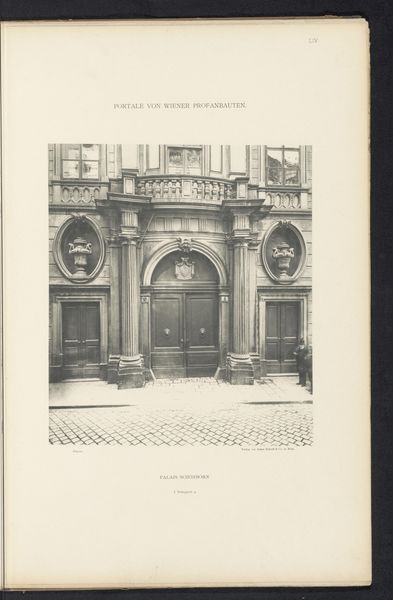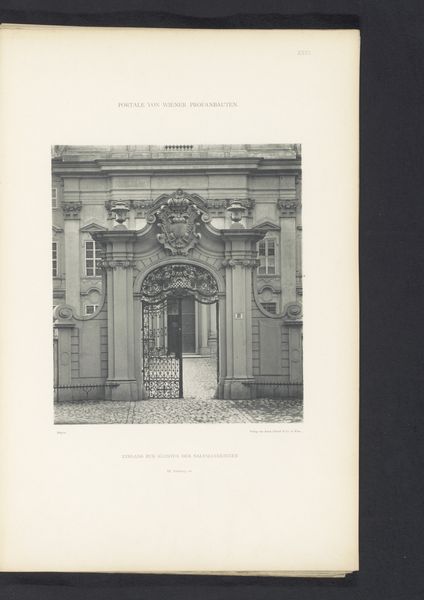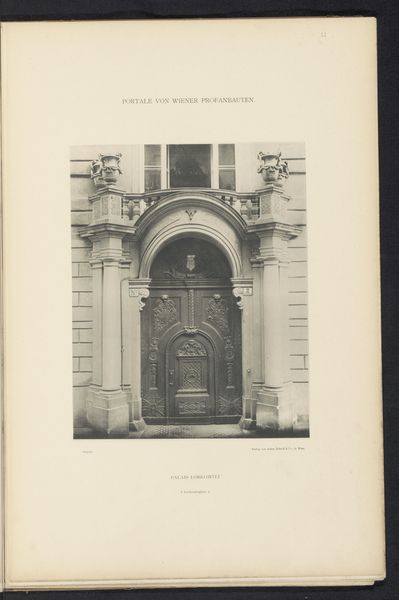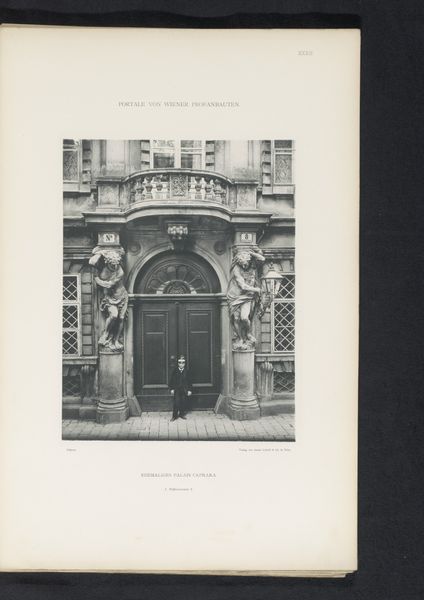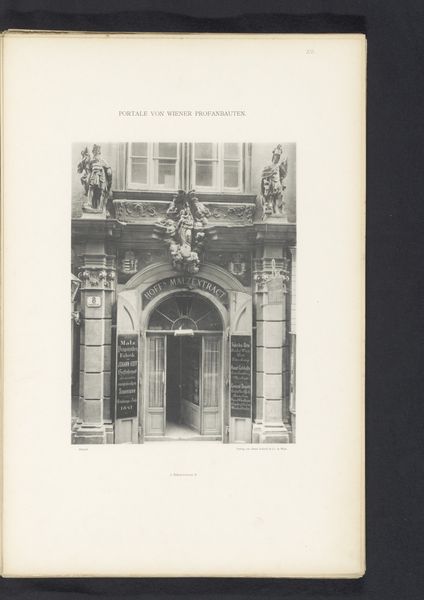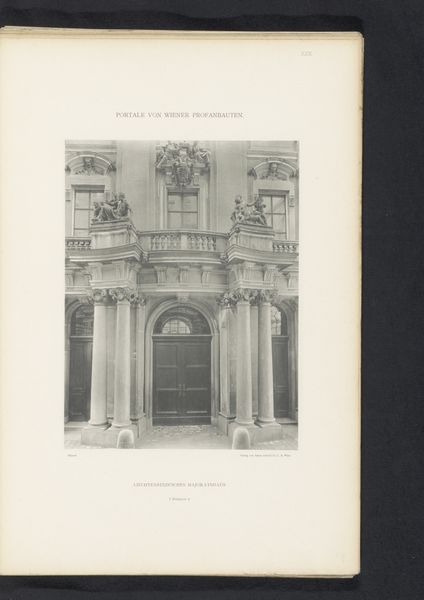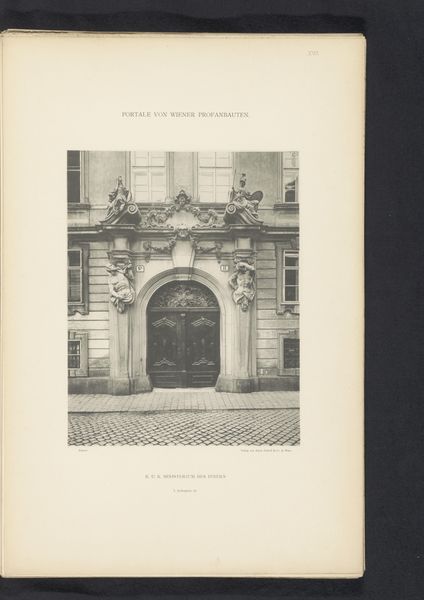
print, photography, photomontage, architecture
# print
#
photography
#
photomontage
#
architecture
#
building
Dimensions: height 267 mm, width 203 mm
Copyright: Rijks Museum: Open Domain
Curator: What an imposing facade! The symmetry is almost severe, yet the detailing invites closer inspection. Editor: It’s beautiful but foreboding, like a fortress rather than a welcoming entryway. Those heavy wooden doors… they suggest secrets. Curator: Indeed. We’re looking at an early photographic print, likely a photomontage, documenting the entrance to a building at Dorotheagasse 5 in Vienna. The date is before 1894, so it captures a slice of Viennese life in the late 19th century. Editor: I see it. I can practically hear the clip-clop of horse-drawn carriages and the hushed tones of the upper class. I’m interested in what might have been happening politically at this time? Were those doors truly for protection or an oppressive status quo? Curator: Vienna then was a city of contrasts – grand imperial projects alongside burgeoning social movements. Architecture often mirrored this tension. Consider the rigid, neoclassical influence versus the growing calls for social reform represented in artistic and architectural styles. Editor: So, is it trying to appear strong to suggest everything is still in control while movements demanding equality are happening all around? Look at those thick columns flanking the doorway! And the numbers 'Nº' one side, '6' the other. They appear rigid and inflexible and that beautiful stone carving feels frozen above the door, adding another layer of...authority? Curator: It does suggest authority but maybe more about permanence and civic pride. The quality of the materials and craftsmanship speaks to a desire to project stability, even as society was rapidly changing. Editor: Maybe, but who did that stability serve? Think about whose hands built this doorway. Who passed through it and who was kept out? The facade acts almost like a class boundary rendered in stone and wood. Curator: That’s a crucial point. This doorway would have represented access – both literal and metaphorical – to a certain level of society and wealth. Photography was, at the time, often used to document social structures, so images such as these, perhaps inadvertently, reveal these very issues. Editor: I guess that's something to keep in mind with architectural records like this: beneath the veneer of grandeur, there are ever present implications about labor and class that persist to the present day. Curator: A potent reminder to consider the layers beneath the surface, as we view these historical records.
Comments
No comments
Be the first to comment and join the conversation on the ultimate creative platform.
